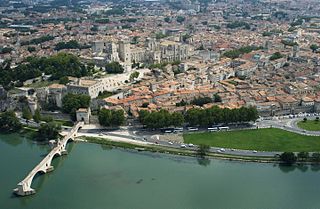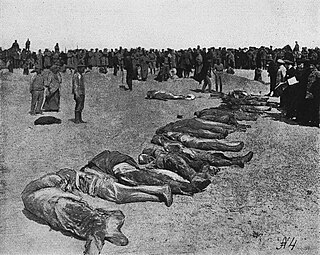
The Congregation of the Sacred Hearts of Jesus and Mary and of the Perpetual Adoration of the Most Holy Sacrament of the Altar is a Roman Catholic religious institute of brothers, priests, and nuns. The priests of the Congregation of the Sacred Hearts of Jesus and Mary are also known as the Picpus Fathers, because their first house was on the Rue de Picpus in Paris, France. Their post-nominal letters, SS.CC., are the Latin initials for Sacrorum Cordium, "of the Sacred Hearts"..

The Servite Order is one of the five original Catholic mendicant orders. Its objectives are the sanctification of its members, preaching the Gospel, and the propagation of devotion to the Mother of God, with special reference to her sorrows. The members of the Order use O.S.M. as their post-nominal letters. The male members are known as Servite Friars or Servants of Mary.

Eucharistic adoration is a Eucharistic practice in the Roman Catholic, Anglo-Catholic and some Lutheran traditions, in which the Blessed Sacrament is adored by the faithful. This practice may occur either when the Eucharist is exposed, or when it is not publicly viewable because it is reserved in a place such as a church tabernacle.

Saint Peter Julian Eymard, SSS (ɛy'mɒ), was a French Catholic priest and founder of two religious institutes: the Congregation of the Blessed Sacrament for men and the Servants of the Blessed Sacrament for women.
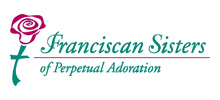
The Franciscan Sisters of Perpetual Adoration (FSPA) is a Roman Catholic religious congregation for women whose motherhouse, St. Rose of Viterbo Convent, is in La Crosse, Wisconsin, in the Diocese of La Crosse. The Franciscan Sisters of Perpetual Adoration founded Viterbo University and staffed Aquinas High School in La Crosse. The congregation traces its roots to 1849.

Whitson is a village on the outskirts of the city of Newport, South Wales. It is located about 7 miles (11 km) south east of Newport city centre on the Caldicot Levels, a large area of coastal land reclaimed from the sea. Administratively, Whitson is part of the community of Goldcliff.

The Holy Spirit Adoration Sisters are a Roman Catholic religious institute of contemplative cloistered nuns.

The Congregation of the Blessed Sacrament commonly known as the Sacramentinos is a Catholic Religious institute of pontifical right composed of priests, deacons, and brothers founded by St. Peter Julian Eymard. By their life and activities, they assist the Church in her efforts to form Christian communities whose center of life is the Eucharist. They commit themselves to the implementation of this ideal in collaboration with lay men and women engaged in various ministries.

St. Rose of Viterbo Convent is the motherhouse of the Franciscan Sisters of Perpetual Adoration, an American religious congregation, which is located in La Crosse, Wisconsin. The convent is dedicated to Rose of Viterbo, a 13th-century Franciscan tertiary who was a noted mystic and street preacher in Italy who died while still a teenager.
The Tabernacle Societies were lay Eucharistic Adorative associations within Roman Catholic parishes, principally in America and Australia, forming part of the Archassociation of the Eucharist under the guidance of the Association of Perpetual Adoration of the Blessed Sacrament.
Servants of the Most Blessed Sacrament is a Roman Catholic religious institute of women, founded by the Venerable Pierre-Julien Eymard in 1858, assisted by Mother Margaret of the Blessed Sacrament, with the authorization of Mgr Morlot, Archbishop of Paris.

The Servants of the Blessed Sacrament is a Roman Catholic contemplative, but not cloistered, congregation of sisters with a focus on Eucharistic adoration.
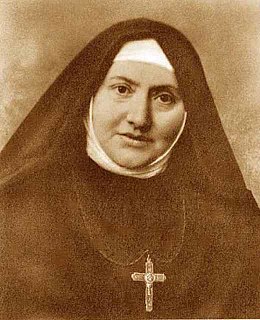
Saint Geltrude Caterina Comensoli, also known as Mother Geltrude is the Patron of Youth, Val Camonica and Relic Custodians.

Ethan Flagg House-Blessed Sacrament Monastery is a historic home and monastery located at Yonkers, Westchester County, New York. It was built in 1855, with additions made in 1922 and in 1954. The house is a two-story, five-bay wide brick building on a rock faced, random ashlar base in the Italianate style. It has a prominent square cupola and a one-story, wooden porch set on brick piers across the front facade. The four story, brick monastery building was built in 1922. It has a two-story rear wing with conservatory and includes a former chapel. It features an octagonal cupola and has some cast stone and stucco trim. The 1954 addition connects the house and monastery building. The original house was built by industrialist Ernest Flagg (1820-1884), a leading citizen of Yonkers. The property was a residence until its purchase in 1915 by the Sacramentine order of nuns. The academy closed in 1975 and the nuns relocated to Warwick, New York in 1991. In 1996, the property was sold for use as a medical and social service center for people with HIV run by the Greyston Foundation.
The "'Religious of the Perpetual Adoration'" was a religious congregation of the Catholic Church. It was founded by Sister Elizabeth Zwirer, in Einsiedeln, Switzerland, 1526, following the Benedictine rule.
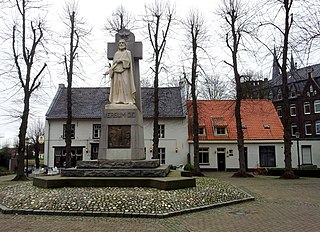
Steyl is a village in the Tegelen district of the municipality of Venlo, the Netherlands. The village on the river Meuse is mainly known for its monasteries. In 2004, a section of the village including four monasteries was made a conservation area under protection of the Dutch heritage agency Rijksdienst voor het Cultureel Erfgoed.

The Adorers of the Sacred Heart of Jesus of Montmartre, OSB is a Catholic order of Benedictine nuns, often known as Tyburn Nuns.
The Order of the Blessed Sacrament is an enclosed congregation and a reform of the Dominican Order devoted to the perpetual adoration of the Blessed Sacrament.

The Chapel of the Sisters of the Poor Clares is a church in downtown Bydgoszcz.
Saint Francesco Spinelli was an Italian Roman Catholic priest and the founder of the Sisters Adorers of the Blessed Sacrament. Spinelli became close contemporaries of Saint Geltrude Comensoli and Blessed Luigi Maria Palazzolo and had a previous collaboration with Comensoli in which the two established a religious institute in Bergamo before a rift between members caused Spinelli to distance himself from its work and leave.



